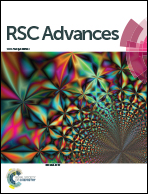First principles study of g-Mg3N2 as an anode material for Na-, K-, Mg-, Ca- and Al-ion storage†
Abstract
Searching for electrode materials for non-lithium metal ion batteries (NLMIBs) is key to the success of NLMIBs. In this work, we investigated the scientific feasibility of using g-Mg3N2, which is a novel 2D graphene-like material, as an anode for non-lithium metal-ions (Na, K, Mg, Ca and Al) batteries based on density functional theory calculations. The sequential adsorption energy, Bader charge, intercalation voltage, energy-storage capacity, electronic conductivity and metal-ion diffusion energy barrier are calculated. Results show that the metal-ion intercalation potentials and diffusion energy barriers are suitable for battery application. The maximum specific capacities for Na-, K-, Mg-, Ca- and Al-ion on g-Mg3N2 are predicted to be 797, 797, 531, 1594 and 797 mA h g−1, respectively. The excellent structural stability of g-Mg3N2 is good for the cycling performance. Moreover, the electronic structure of the g-Mg3N2 changes from semiconductor to metal upon metal-ion adsorption, as well as relatively low metal-ion diffusion energy barriers (except for Al-ion diffusion), are beneficial to the charge/discharge rate of the g-Mg3N2 anode.



 Please wait while we load your content...
Please wait while we load your content...